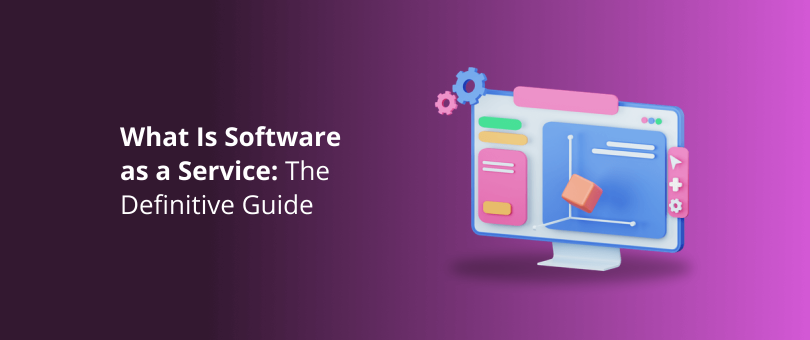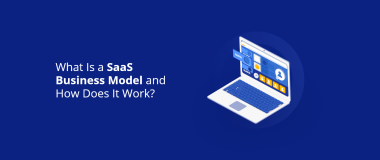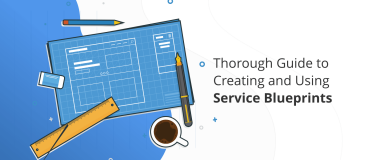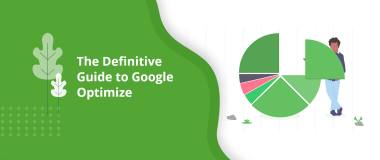Software-as-a-Service (SaaS) is an industry that is booming! An increasing number of businesses have adopted the SaaS model, with 56% of enterprises that were previously not using SaaS, now interested in it.
In other words, there is not a better time to be in SaaS than now. But, more possibilities mean more challenges. You need to know where to adopt the technology, and how to use it effectively.
If you want to take your business to the next level through software, you’re in the right place! As creators of everything SaaS, DevriX has decided to share with you our definition of what a Software as a Service is, and how you can use it to edge out your competition in the marketplace.
What Is Software as a Service?
Software as a Service (SaaS) is a software distribution model where a third-party provider hosts applications and provides them to clients via online subscriptions. A SaaS company is a business geared towards developing, hosting, and maintaining a SaaS product.
SaaS is one of three main categories of cloud computing, together with Infrastructure as a Service (IaaS) and Platform as a Service (PaaS). It eliminates the need for companies to install software and run it in their own data centers.
Undoubtedly, SaaS transformed the software delivery model! In the past, software installation and technology adoption processes could last for weeks. Not anymore.
With SaaS, things get picked up quickly, in a matter of days. Consequently, SaaS became the core model for delivering business software.
Businesses typically use about 16 SaaS apps daily. SaaS opens new opportunities, offers flexible expenses, and it’s easy to adopt and maintain.
Companies don’t need tons of hardware and an in-house server to use the software anymore. SaaS applications provide massive databases and lots of technologies that can be used at any time and anywhere.
All the users need is a web browser and an Internet connection.
Why Should You Consider Building a SaaS?

Scalability
With a SaaS application, you can choose your delivery model and alter it when necessary. You don’t have to worry about capacity when the number of users increases. With the SaaS model, you can add users as needed, without stressing about acquiring new hardware and other equipment.
Readers Also Enjoy: Four Ways to Improve WordPress SaaS Landing Pages – DevriX
Clients can get extra bandwidth with only one click. When new users are required, they can register with an ID and a password, instead of purchasing physical software.
The different SaaS models also allow flexibility in terms of licensing and apps depending on the users’ business responsibilities.
Lower Costs
A SaaS application can significantly reduce your IT-intended budget. With the money that you’ve saved, you can invest in other areas while still deploying a scalable, fully-functional, and a protected business application.
SaaS can save you time, costs, and reduces investment risks. Most of the features of your SaaS will have automatic upgrades, which means everything will work when the foundation gets updated.
Higher Customer Lifetime Value
Upselling and cross-selling are perfect for SaaS models. Instead of selling the client your SaaS features every month, you can provide them with a range of packages and options.
When the clients’ requirements change, they can upgrade their app with the click of a button. It allows you to get more revenue at scale.
Greater Customer Loyalty
As a SaaS company, you can provide your customers with a variety of benefits, including free storage, discounts, or gifts and contests.
In your SaaS app, you can also have built-in communication between you and your clients. It can help you build and maintain a rapport while providing excellent customer service.
You can also allow design flexibility, so the clients can personalize their dashboards according to their preferences without hindering the core functions of the app.
Types of SaaS Products
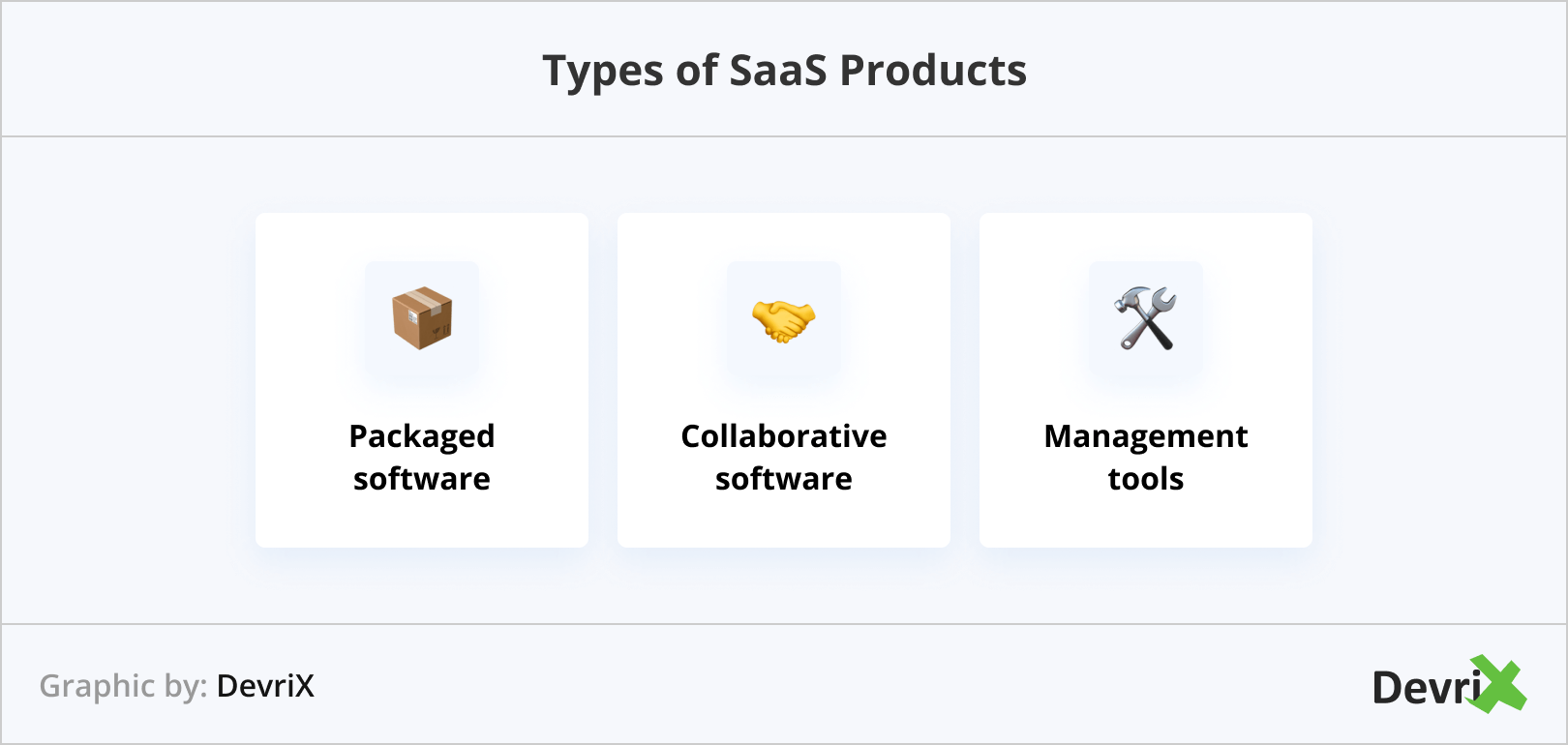
SaaS applications come in all shapes and sizes and for various purposes. Most of them fall under one of the three categories:
- Packaged Software. Packaged software comes in many forms: CRM software, supply chain management, financial management, and HR software such as these HRMS options, are among the most common ones. These products have specific business features that benefit customers.
- Collaborative Software. SaaS centered on collaborative work such as web conferences, document collaboration, project planning, instant messaging, and email. These tasks are frequent among enterprises, and with a SaaS, they are available from any location and device.
- Management Tools. Think about the testing, monitoring, and measuring tools online. These types of SaaS applications helps organizations streamline processes and automate their operations.
Check out if your SaaS is a CRM or similar: How Introducing a CRM Helps Your Sales
SaaS Pricing Models
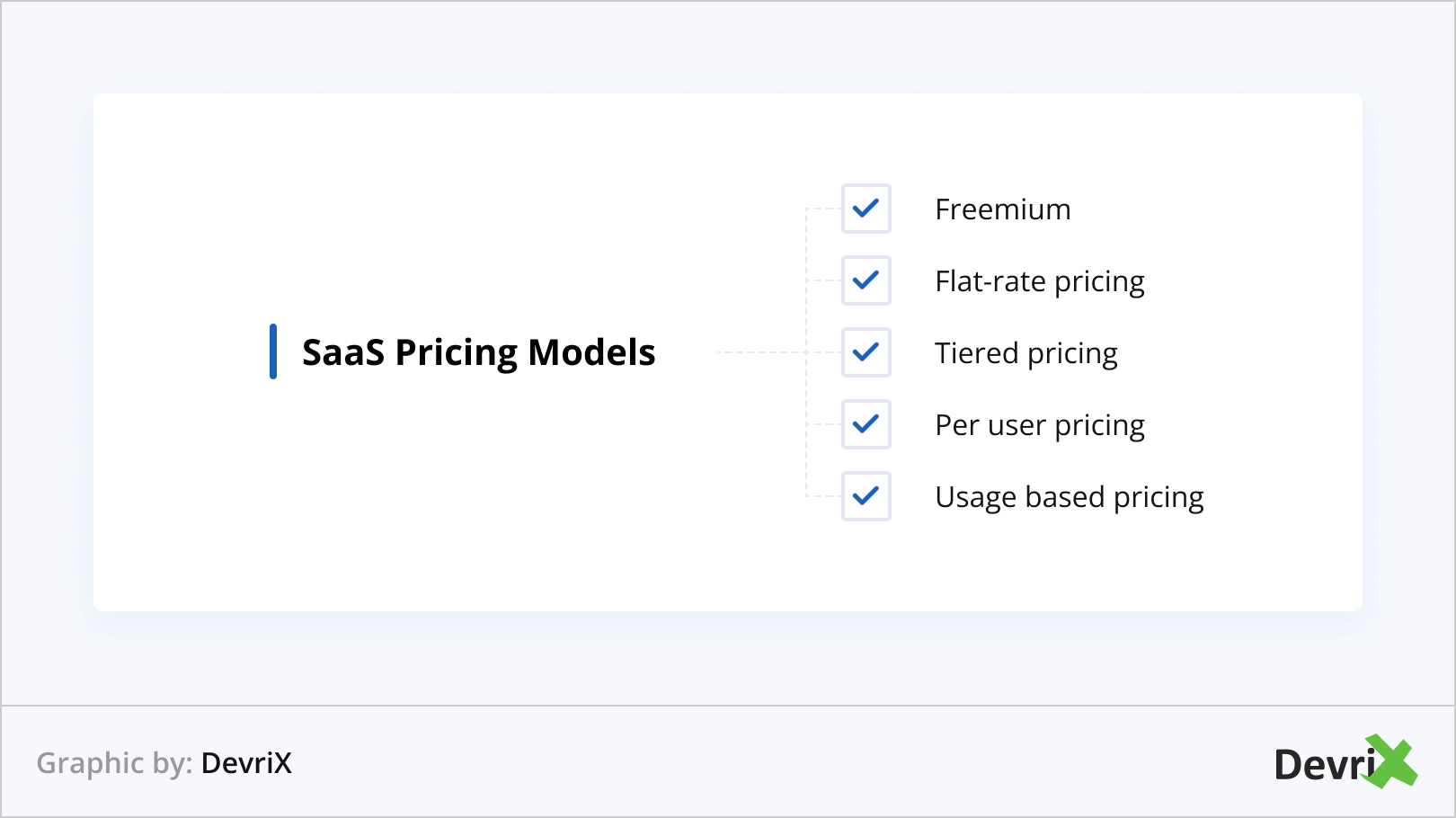
Before launching your SaaS application, you need to decide what your pricing model will be.
The following are examples of pricing models that you can use for your SaaS software:
Freemium
The freemium model provides multiple features for free. Slack and Dropbox are excellent examples of a freemium SaaS product. People can use them for free, but when they need more than the basics, they must upgrade to a paid package.

Source: Dropbox
Pros of Freemium Pricing
The freemium model makes things easier for customers to begin using your product. It also has viral potential.
Dropbox grew through user referrals. Existing users recommended the freemium to friends and colleagues.
Cons of Freemium Pricing
If not appropriately calculated, this model can destroy your revenue. Free users often mean that you don’t get any income. For that reason, your paid users must bring in enough, so you can serve everyone – paid and free.
While a free version of your SaaS app makes the adoption straightforward, it also makes it simple for users to ditch your product, increasing churn as a result.
It can diminish the value of your premium features. If you resolve a massive and expensive problem for free, why would someone have to pay you for basically the same solution to that issue?
Flat-Rate Pricing
With the flat-rate pricing model, you can provide a single feature set for a flat rate. It is probably the simplest way to sell your SaaS application – one product, with a defined set of features, for a single price.
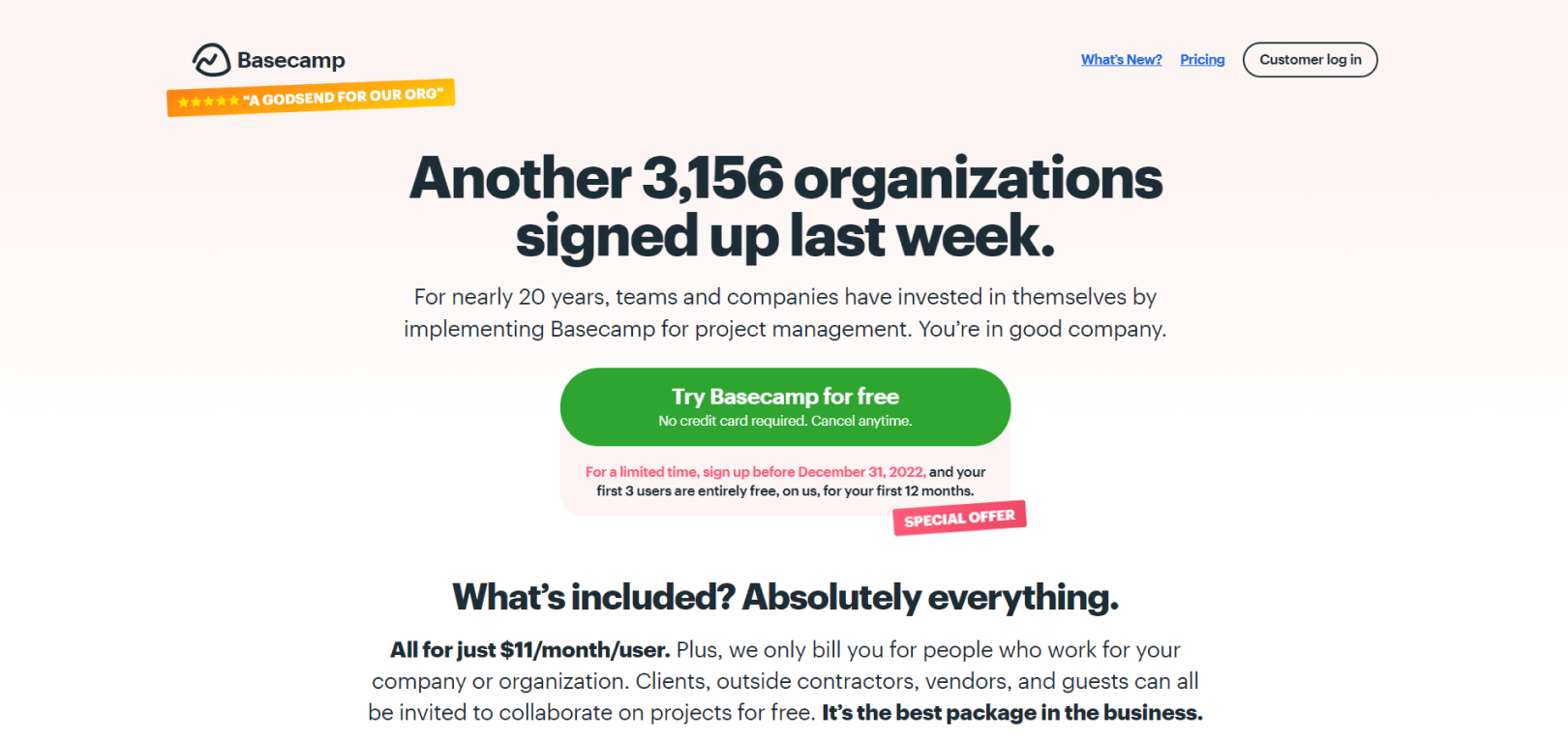
Source: Basecamp
Pros of Flat-Rate Pricing
Providing a single product for a single price focuses your efforts on selling a clearly-defined offer. It’s a pricing model that is easy to trade because the flat rate is more comfortable for any potential customer to understand.
Cons of Flat Rate Pricing
It’s hard to serve a variety of users. If you’re aiming for the B2B industry, you can’t deploy a B2C-friendly flat-rate pricing strategy because you’ll miss out on those that needs your product. You only have one chance to convince your prospects – they’ll either be your customers for the flat rate, or they won’t.
Readers Also Enjoy: WordPress Software as a Service – 7 Successful SaaS Companies | DevriX
Tiered Pricing
It is the most typical pricing model in the SaaS industry. It offers multiple packages. Each package has a different set of options designed to suit a variety of users’ needs.

Source: HubSpot
Pros of Tiered Pricing
With this pricing model, you can focus on multiple target personas. A single package can only suit one target persona. With tiered pricing, you can personalize your packages for various types of customers.
You can maximize the revenue that you’ll receive by upselling the premium packages.
Cons of Tiered Pricing
It’s tempting to offer different packages to suit different needs, but, you can’t be everything to everyone. If you provide too many choices and options, people can get overwhelmed.
Making prospects decide between ten different packages is an easy way to lose their attention.
Per-User Pricing
It’s the go-to SaaS pricing model, and it all comes down to its simplicity. One user pays a single monthly fee. For two users, the price is doubled, and so on.

Source: Asana
Pros of Per-User Pricing
It’s a simple pricing model. It makes the monthly cost calculation easier for potential customers, which simplifies your sales as well. With the per-user pricing model, you can also scale as the number of users rises. If you double the product users within one company, it means that you will increase your revenue.
Cons of Per-User Pricing
This pricing model sometimes makes it possible for companies to cheat by sharing one login for several team members.
It also facilitates churn. If product adoption gets limited within a company, it will be much easier for users to abandon the software. A team of 5-10 users is more likely to churn than a company with 50 users of your product.
Usage-Based Pricing
You are charging for the product usage, as opposed to charging for the features that you offer to the users. The more they use your product, the bigger the bills are for your customers.
Pros of Usage-Based Pricing
With usage-based pricing, there are no up-front fees. Even the smallest businesses can use your solution, knowing that the price will rise if they use the product more.
Cons of Usage-Based Pricing
With this pricing model, it’s much more difficult to predict and scale your revenue. The billing amounts will differ with each month, which makes the entire revenue prediction and budgeting harder.
Things to Consider When Adopting SaaS
There are several things that you need to consider before you notify your team that you’re transitioning to the Software as a Service model.
Market Research & Target Audience
Market research is critical to your SaaS product’s success. It helps you learn more about how your customers think, their purchasing patterns, software proficiency, and more.
Through market research, you’ll uncover the business opportunities for your SaaS that have the best earning potential. Market research is also an excellent way to monitor your competitors so that you can maintain a competitive advantage.
It shows you the content your target audience wants to read and that will keep them engaged with your social media, email, and blog content.
Technical Specifications
Not every technology and programming language will be the right fit for your SaaS product. It is why having the right framework for your SaaS product is crucial.
There are customizable programming languages and frameworks that resolve problems, and work well with tools or platforms such as database systems, image processing libraries, and scientific frameworks.
It would be best to make sure that your SaaS product is built on top of a scalable software architecture, so you can upgrade the product without squandering too much of your team’s time and resources.
Product Features
The unique features are what should set your SaaS product apart from the competition. It is also the factor that should solve your target market’s problem.
Think about how you can improve your application’s functionalities and how to allow your customers to solve their issues effortlessly.
Budget
Financial planning is something that you must address before you start with a SaaS product. You need to define your product and development costs.
Also, you will need to stay cost-efficient and profitable without having too many infrastructure costs.
Launching Prototype
The best way to test the product is to launch a prototype. You don’t need to have the design as perfect when you’re prototyping.
Instead, you need the essential features to work. It will help you identify the product’s strengths, as well as the weaknesses that you need to improve before the launch.
Readers Also Enjoy: SaaS SEO: Effective Growth Strategy [2022] – DevriX
Empower Your SaaS Business with WordPress
Every day, more and more developers are using WordPress to build something innovative. Our beloved CMS can be used to satisfy user requirements, as well as for creating SaaS applications.
WordPress is excellent for a SaaS that focuses on content, user management, and extensible features or payment options. WordPress’ scalability and security are more than verified. The CMS allows countless 3rd party integrations, broader adoption, and support to frequently used platforms.
WordPress can be easily extended to a SaaS by providing various roles, features, and subscription-based payments that allow different user capabilities depending on a given pricing package.
For your WordPress app, you can have premium users along with other plans. Each plan could have a defined set of features that are off-limits in freemium plans.
The requirements of a WordPress SaaS application depend on your business model. The majority of SaaS solutions center on a fee that provides access to online features.
For example, let’s say that you want to build a Membership platform for your website. In that case, user management can be a bit tricky, together with the security aspects and payment scenarios.
That’s the reason we often recommend WordPress Multisite when developing SaaS solutions with WordPress. You can integrate the same freemium features for every multisite user and the more advanced features for premium users.
You can scale a Multisite across various servers, and in a cloud environment. Throughout the years, we’ve worked on SaaS solutions extensively used by SMBs and enterprises.
So far, at DevriX, we’ve built complete Software as a Service apps based entirely on WordPress, namely: Marketing automation platforms, social network-based solutions, real estate IDX suites, and numerous hosted networks.
Project Roadmap. Identifying the requirements needed to launch your SaaS. Also, the development of your business strategy according to your target market.
Minimum Viable Product. Developing an early and beta-testing ready MVP version that helps us to enhance the core product over time. Upon validating it, we can continue with the innovation and further expansion of the product.
Milestones. Planning the next versions, as well as the release dates for a future launch.
Integration. If necessary, integrating your SaaS with a particular WordPress build.
Multisite SaaS: Integrating domain mapping to WordPress Multisite that allows premium users to use their domain for their SaaS subsite.
Ongoing Development and Support. We work tirelessly to increase system stability and introduce new features for your SaaS and your users.
Wrapping Up
SaaS provides you with unlimited business opportunities. But, along with the higher demand and competition, you also need to be aware of the dynamics of the SaaS industry and work relentlessly to differentiate your business by offering unparalleled solutions and tremendous value.
